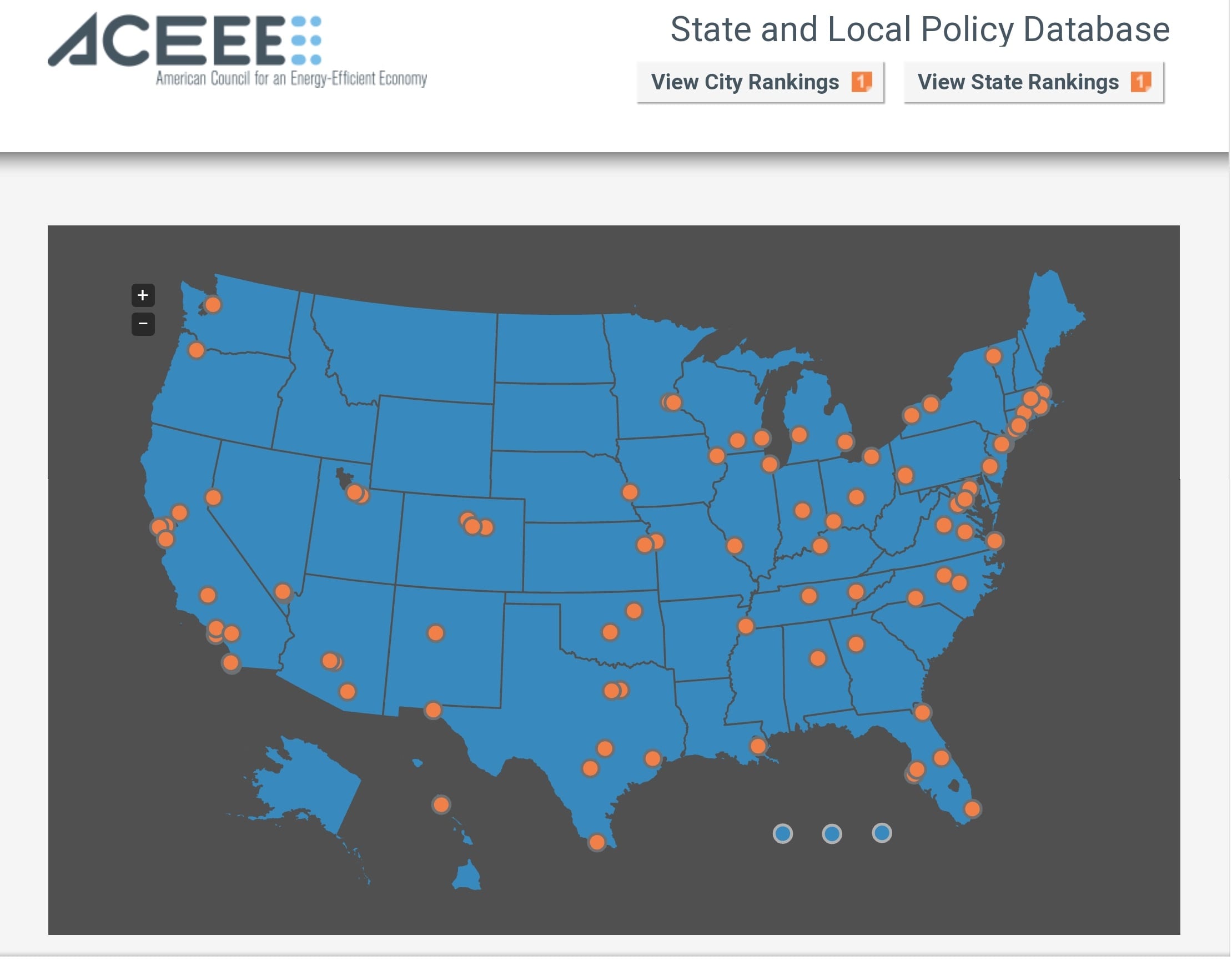Part 18 of 20: Opportunities outside of the design phase
> Full List of Opportunities <
Local policies related to energy efficiency, implemented by a municipality, county, or metropolitan region, are put in place to protect the environment. However, they also improve community self-reliance, save consumers and citizens money, create local “main street” jobs, and catalyze domestic economic investment. The American Council for an Energy-Efficient Economy (ACEEE) has compiled their State, and Local Policy Database, which includes comprehensive information on energy efficiency policies and programs implemented in dozens of leading localities around the United States.
Building energy codes have evolved to ensure a minimum level of energy efficiency in new construction and remodeling, and often require an analysis of the proposed building’s efficiency in advance of a permit. A building energy rating involves analysis of the building’s construction plans and onsite inspections to produce a grade or score based on a standard point scale (typically 0 to 100). With this evolution comes the new opportunities as a Home Energy Rating Provider.
No prior experience or specialized education is required to become a Home Energy Rating Provider; however, much of the tasks involved in performing a building rating include plan reading and quantity take-offs; therefore your background as a building designer is a perfect segue to this particular side hustle.
How To Find The Work

As usual, the primary audience for this type of service will be your existing clients. On your menu of services provided, add Home Energy Rating Provider as one of the many possible choices. If the local jurisdiction requires a rating, explain that a rating provider is needed and you can eliminate one of the many “moving parts” in the design process by providing this service in-house.
Providing home energy ratings is also a service to other building design firms is also an opportunity, in this case. Join local, State, and national building design organizations then get involved by attending their meetings and conferences. Also, join your local home builders and associated general contractor associations. If they are not commissioning the building design and energy rating for their projects, they are still good sources of referrals.
How To Prepare
Your first step to becoming a Home Energy Rating Provider is to locate an accredited organization offering training in the field. The Residential Energy Services Network (RESNET) is a great first source. Accredited rater training providers provide the training that rater candidates are required to complete to become certified by an approved rating provider. Some training providers offer a portion of their training online.
How To Handle The Job
The home energy rating industry is overseen nationally by RESNET and is structured to ensure a high level of quality assurance. With that in mind, energy raters must work through a Rating Provider, who is responsible for their certification and quality assurance. The accredited Rating Provider will assist new Raters in overseeing a required five (minimum) probationary ratings.
After completing a minimum of five probationary ratings and passing all the required exams, the Rating Provider will issue a document stating that the candidate has passed the course work necessary to become a HERS Certified Rater and may apply for a Rating Test Identification Number or RTIN. RESNET Standards require the Rating Provider to perform file quality assurance reviews on a minimum of 10% of all energy ratings and field quality assurance reviews on a minimum of 1% of the scores for each rater.
To continue to hold the HERS certification, you must attend a RESNET approved conference or complete 18 hours of preapproved RESNET professional development.
